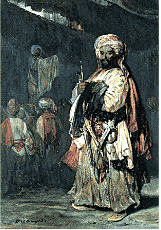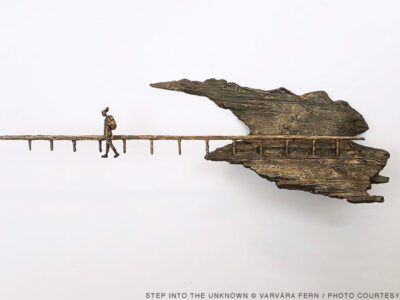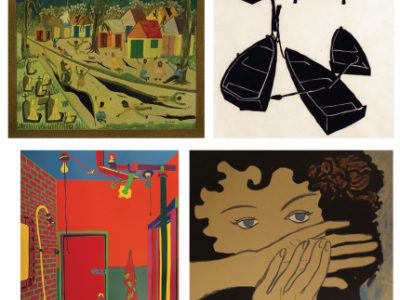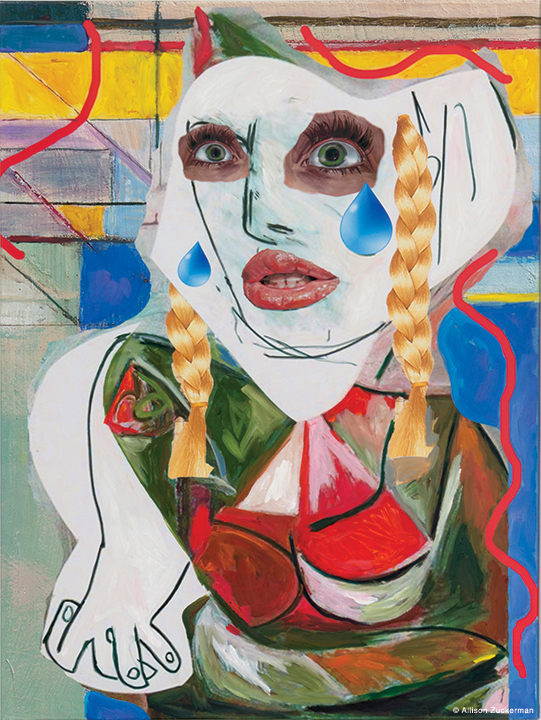
The very fact that Arts, Humanities and Society constitutes one of the Five Academic Priorities in Penn’s latest strategic plan “says an awful lot” about the seriousness with which the administration is now taking arts and culture, noted Provost Robert M. Barchi Gr’72 M’72 GM’73 during the second annual Penn Arts Day program on March 24. And while it’s critical to have some “out-of-the-box-thinking” to achieve the goals being set, he told his multifarious audience, “the fact that you’re all in the same room together is already out of the box.”
In fact, a good deal of ex-box thinking is going on at Penn, as Barchi and others were quick to point out. It’s happening at the Institute of Contemporary Art, whose curatorial program—a collaboration with the art-history department—enabled a select group of students to mount an exhibition last year titled “s(how),” which was the culmination of a year-long seminar on contemporary art and the art of curating that focused on the themes of ephemerality and bodily consumption. It’s happening at the Arthur Ross Gallery, whose current exhibition, Master Drawings (1800-1914) from the Ashmolean Museum, Oxford, was the subject of a graduate art-history seminar, in which the students traveled to Oxford University to study first-hand drawings and watercolors by artists like Degas, Cézanne, Pissaro, and Rodin. (They also prepared essays for the catalogue to the exhibition, which runs through June 27.) It’s happening in the Gospel Research and Performance Program (www.westphillygospel.org), an “academically and performance-based community project” that has brought together such disparate entities as the Annenberg Center for the Performing Arts, the music department, the Penn Humanities Forum, the Center for Community Partnerships, and the Millennium Baptist Church in West Philadelphia.
There are plenty of other examples of Penn’s academic departments and schools stretching traditional boundaries to include the arts, noted Dr. Peter Conn, the deputy provost and chairman of the Provost’s Council on Arts and Culture, which co-sponsored the Arts Day program with the Office of the Secretary. Conn, who has been a driving force behind the renewed emphasis on arts and culture at Penn, cited as one unusual example the School of Nursing’s involvement in a recent exhibition titled “The Nightingale’s Song: Nurses and Nursing in the Ars Medica Collection of the Philadelphia Museum of Art”—which, he said, “gives some indication of the extent to which all four of our undergraduate schools are actively trying to become associated with this core activity at the University.”
If there was a single leitmotif running through the Arts Day activities, it was collaboration.
“Today, arts and culture are embedded in the very fabric of Penn,” said President Judith Rodin at a luncheon for the participants in Irvine Auditorium. “In the University’s strategic plan, we have clearly signaled Penn’s commitment to integrate the arts and culture into our curriculum, and to encourage more arts-centered collaborations—among our faculty and students on campus, and between the academic units and cultural organizations: both our own, like the ICA, and other institutions throughout the region.”
Dr. Rebecca Bushnell, the professor of English who serves as dean of the College, cheerfully admitted that she had a “profound self-interest” in strengthening ties between Penn’s academic programs and its arts and culture institutions.
For one thing, the arts and culture institutions at Penn “are part of what makes us unique, and they are also a great way for me to recruit really bright and really interesting students to Penn,” she said. And once those students are here, those same institutions provide “great opportunities” for “hands-on problem-solving learning for our students.”
Bushnell pointed to a new “summer research institute” in which younger students can do an internship in one of the arts and culture institutions on campus. The program encompasses the College, the Center for Undergraduate Research and Fellowships, and a broad range of arts and culture institutions, including the University of Pennsylvania Press, the ICA, the Arthur Ross Gallery, the Morris Arboretum, the Kelly Writers House, and the University Museum.
Such collaborative efforts provide a wealth of real-world experience for students, as ICA director Claudia Gould pointed out during one of the program’s two case presentations. In the “(s)how” project, students visited a number of East Coast galleries (including some owned by Penn alumni), which not only helped them understand the possibilities for such an exhibition, but also gave them a dose of reality in the form of shipping costs and the like. The students’ budget of $10,000 forced them to make hard choices about the pieces they wanted to borrow.
In the other case presentation, Michael Rose, director of the Annenberg Center, noted that the gospel program developed partly as a result of conversations with Dr. Ira Harkavy, director of the Center for Community Partnerships, and led to a collaboration with the music department. Harkavy himself called it “one of the most satisfying projects” he had ever been involved with, and one which showed a way of “seeing West Philadelphia not as a problem” but as a source of collaborative effort, and its music as a powerful local expression of art. The gospel program has not only brought great music to Penn and provided students and faculty with a rich source of creative material; it has also helped expand Penn’s consciousness “past 48th Street,” in the words of Dr. Carol Muller, assistant professor of music. (The Annenberg Center has already put on several gospel-related events in its Penn Presents series, and on June 12, it will present the Wilmington Chester Mass Choir, the Freedom Choir of Philadelphia, and soloist Tamika Patton, as well as a lecture by Dr. Timothy Rommen, assistant professor of music.)
A number of practical, real-world concerns were addressed by Lori Doyle, Penn’s vice president for university communications, and Dr. Lee Nunery, vice president for business services. Doyle showed a prototype of the new Arts & Culture at Penn website, which will be unveiled this fall and should provide a promotional boost for arts and cultural organizations, and help make Penn a cultural destination in the region. Nunery noted that Penn’s Department of Facilities and Real Estate Services had helped sponsor this year’s Philadelphia Film Festival and offered parking discounts for numerous arts and culture events; it has also provided financial and marketing support for consumer products, such as the artfully designed Sumerian ties and scarves from the University Museum.
“When the Provost’s Council on Arts and Culture was established a little more than four years ago, many took our cultural assets for granted,” said Rodin. “They didn’t see how the arts could serve as a vital catalyst for promoting community and enriching the academic life of the University. Happily, this is no longer true.
“If we continue working together,” she concluded, “it won’t be long before Penn is known as one of the cultural meccas among the nation’s universities.”
—S.H.




